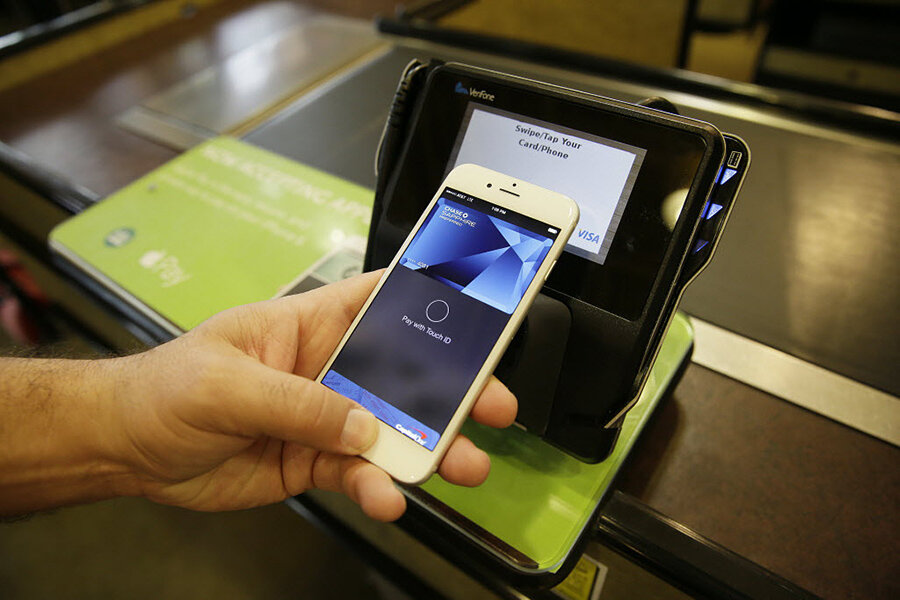The company’s announcement of its own mobile payment system in September 2014 was by far the splashiest, with Apple head Tim Cook saying the system would be “an entirely new category of service.”
Apple Pay works by allowing customers using an iPhone to add a range of supported credit and debit cards to their digital wallet. Making a purchase involves tapping a phone on a pay terminal at a range of retailers — from grocery stores to restaurants to electronics stores that have installed so-called near-field communication (NFC) terminals.
Apple says the system provides additional layers of security by anonymizing a users’ credit card — a process known as tokenization.
This token, rather than an actual credit card number, is the only information provided to a retailer, along with a unique security code that changes for each purchase. To approve a purchase, users must also scan their fingerprint on the iPhone, providing an additional layer of security over traditional magnetic-strip-based credit cards.
But so far, Apple Pay has faced similar obstacles to other NFC-based mobile payment systems, such as Google Wallet, first introduced in 2011, and Softcard — which was briefly known as Isis, but later changed its name — a mobile payment system backed by T-Mobile, AT&T, and Verizon. Google acquired Softcard in February 2015.
A key concern is that, while tapping a phone can be more convenient than swiping a card and entering a pin, the products can be cumbersome to set up. There are also compatibility issues — only recent iPhone models include an NFC chip, meaning that users with earlier phones can’t use the service. Apple Pay currently works with Visa, MasterCard, and American Express cards, with the company reportedly making money from the service by charging fees to banks that issue credit cards rather than merchants or users.
When the system launched, there were 200,000 tap-based terminals, now projected to surpass 1.5 million by the end of 2015.
But some observers say the widespread use of credit cards as a payment system is still a significant challenge for mobile payment providers.
“I think the biggest obstacle right how here in the US is that it doesn’t solve an obvious problem,” James Wester, an analyst at the market research firm IDC who focuses on mobile payments, told the Monitor in November. “For those who really back mobile payments, there’s kind of a divide between the banking system and the technology providers, there are a lot companies coming in trying to quote-un-quote ‘disrupt’ payments. The problem is that payments isn’t a very exciting thing to disrupt, because it works very well."







